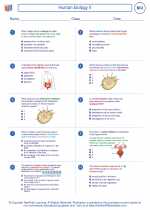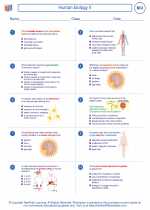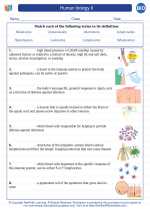Growth in Biology
Growth is a fundamental characteristic of living organisms, which involves an increase in size, mass, and complexity. It is a complex process that occurs at various levels, from the growth of individual cells to the development of entire organisms.
Types of Growth
There are two main types of growth in biology:
- Primary Growth: This refers to the increase in the length of an organism or its parts. In plants, primary growth occurs at the tips of roots and shoots due to the activity of apical meristems.
- Secondary Growth: This type of growth involves an increase in girth or thickness of an organism. In plants, secondary growth is primarily responsible for the increase in stem and root diameter, and it occurs due to the activity of lateral meristems.
Factors Affecting Growth
Several factors can influence the growth of organisms, including:
- Nutrition: Adequate supply of nutrients such as carbohydrates, proteins, vitamins, and minerals is essential for promoting healthy growth in organisms.
- Genetics: The genetic makeup of an organism plays a significant role in determining its growth potential. Genetic factors can influence the rate of growth, final size, and developmental patterns.
- Environmental Factors: External conditions such as temperature, light, humidity, and availability of resources can impact the growth of organisms. Different species have specific environmental requirements for optimal growth.
- Hormones: Growth is regulated by various hormones such as auxins, gibberellins, cytokinins, and abscisic acid in plants, and hormones like growth hormone and insulin-like growth factors in animals.
Study Guide
When studying the topic of growth in biology, consider the following key points:
- Understand the difference between primary and secondary growth in plants.
- Explore the role of genetics in determining the growth patterns of organisms.
- Examine the impact of environmental factors on the growth of organisms and how they adapt to different conditions.
- Learn about the major hormones involved in regulating growth and their mechanisms of action.
- Consider the relationship between growth and development, and how they are interconnected processes in living organisms.
- Explore examples of abnormal growth patterns such as gigantism, dwarfism, and cancer, and understand the underlying causes.
By mastering the concept of growth in biology, you will gain a deeper understanding of how living organisms develop and thrive in their environments.
[Growth] Related Worksheets and Study Guides:
.◂Biology Worksheets and Study Guides High School. Human biology II
Worksheet/Answer key Human biology II
Human biology II  Worksheet/Answer key
Worksheet/Answer key Human biology II
Human biology II  Worksheet/Answer key
Worksheet/Answer key Human biology II
Human biology II  Vocabulary/Answer key
Vocabulary/Answer key Human biology II
Human biology II  Vocabulary/Answer key
Vocabulary/Answer key Human biology II
Human biology II  Vocabulary/Answer key
Vocabulary/Answer key Human biology II
Human biology II  Vocabulary/Answer key
Vocabulary/Answer key Human biology II
Human biology II  Vocabulary/Answer key
Vocabulary/Answer key Human biology II
Human biology II  Vocabulary/Answer key
Vocabulary/Answer key Human biology II
Human biology II  Vocabulary/Answer key
Vocabulary/Answer key Human biology II
Human biology II 

 Worksheet/Answer key
Worksheet/Answer key
 Worksheet/Answer key
Worksheet/Answer key
 Vocabulary/Answer key
Vocabulary/Answer key
 Vocabulary/Answer key
Vocabulary/Answer key
 Vocabulary/Answer key
Vocabulary/Answer key
 Vocabulary/Answer key
Vocabulary/Answer key
 Vocabulary/Answer key
Vocabulary/Answer key
 Vocabulary/Answer key
Vocabulary/Answer key
 Vocabulary/Answer key
Vocabulary/Answer key

The resources above cover the following skills:
LIFE SCIENCE (NGSS)
From Molecules to Organisms: Structures and Processes
Students who demonstrate understanding can:
Develop and use a model to illustrate the hierarchical organization of interacting systems that provide specific functions within multicellular organisms.
Plan and conduct an investigation to provide evidence that feedback mechanisms maintain homeostasis.